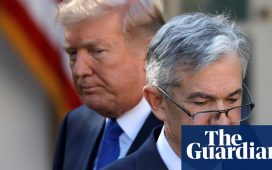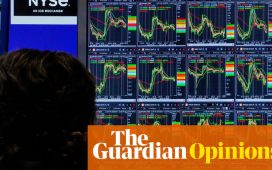Stay informed with free updates
Simply sign up to the US inflation myFT Digest — delivered directly to your inbox.
Federal Reserve officials thought that US inflation was cooling but still needed “greater confidence” before they agreed to cut interest rates from their 23-year high, according to minutes of their most recent meeting.
“Participants suggested that a number of developments in the product and labour market supported their judgment that price pressures were diminishing,” said the minutes from the June meeting, published on Wednesday.
Some rate-setters also noted that retailers were now offering price cuts in the face of weakening consumer demand.
But members of the Federal Open Market Committee also thought they should hold rates at the current level of 5.25-5.5 per cent until “additional information had emerged to give them greater confidence” that inflation was moving “sustainably” to the Fed’s 2 per cent target, the minutes said.
The minutes come after months of concern that price pressures were still not easing as quickly as Fed officials hoped, making them reluctant to cut borrowing costs too quickly.
The Fed sharply increased rates two years ago in a bid to quell inflation that reached multi-decade highs in 2022. Inflation fell quickly last year, and the central bank’s preferred gauge dipped again to 2.6 per cent in May. But it still above its target.
However, the record of the meeting also revealed some policymakers’ concerns that unemployment could rise too quickly if rates remained too high for too long.
“Several participants specifically emphasised that with the labour market normalising, a further weakening of demand may now generate a larger unemployment response than in the recent past when lower demand for labour was felt relatively more through fewer job openings.”
The Bureau of Labor Statistics will publish a closely watched report on the job market on Friday. Economists polled by Bloomberg predict that 190,000 jobs were added in June, which would be a sharp slowdown from the month before.
Officials indicated at the meting in June that they expect to cut borrowing costs just once this year, down from their previous forecast of three cuts.
Inflation and high borrowing costs have become a political problem for President Joe Biden, with polls showing voters remain unhappy with the cost of living in recent years and his handling of the economy.
Traders in the futures market are now pricing in a 70 per cent chance of a cut in September — the final policy decision ahead of the presidential election on November 5. Nearly two cuts are priced by year-end. The central bank next meets on July 31.
Rate-setters signalled in their statement after the last meeting that other factors including the effect of two years of high rates on consumer demand, easing of labour markets and boost to supplies would contribute to more disinflation.








